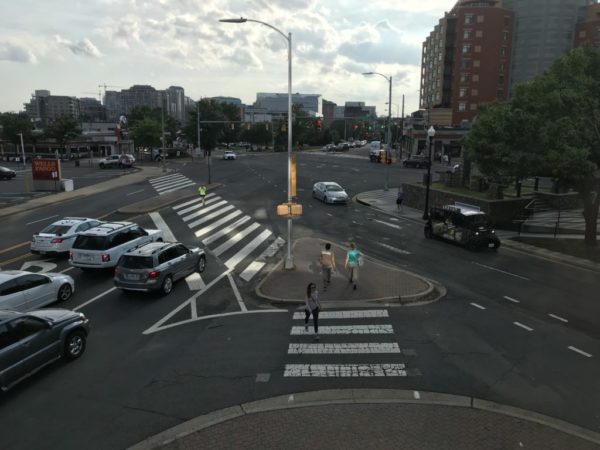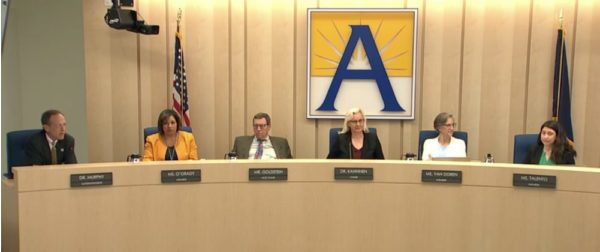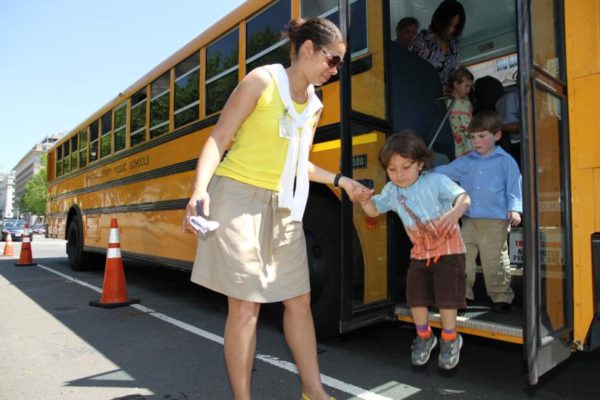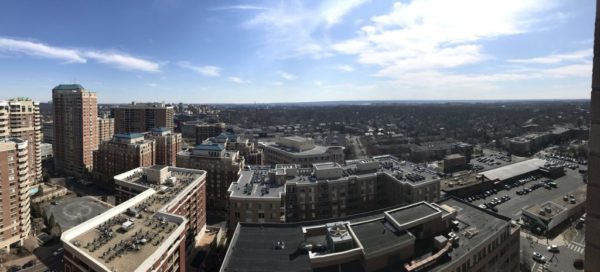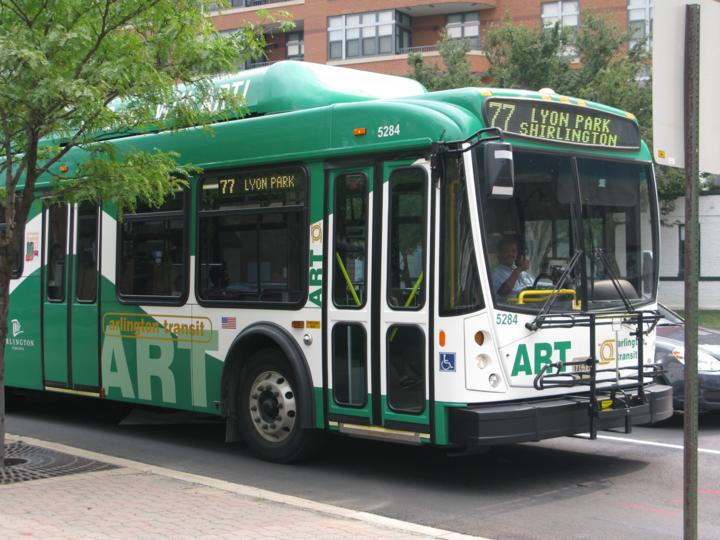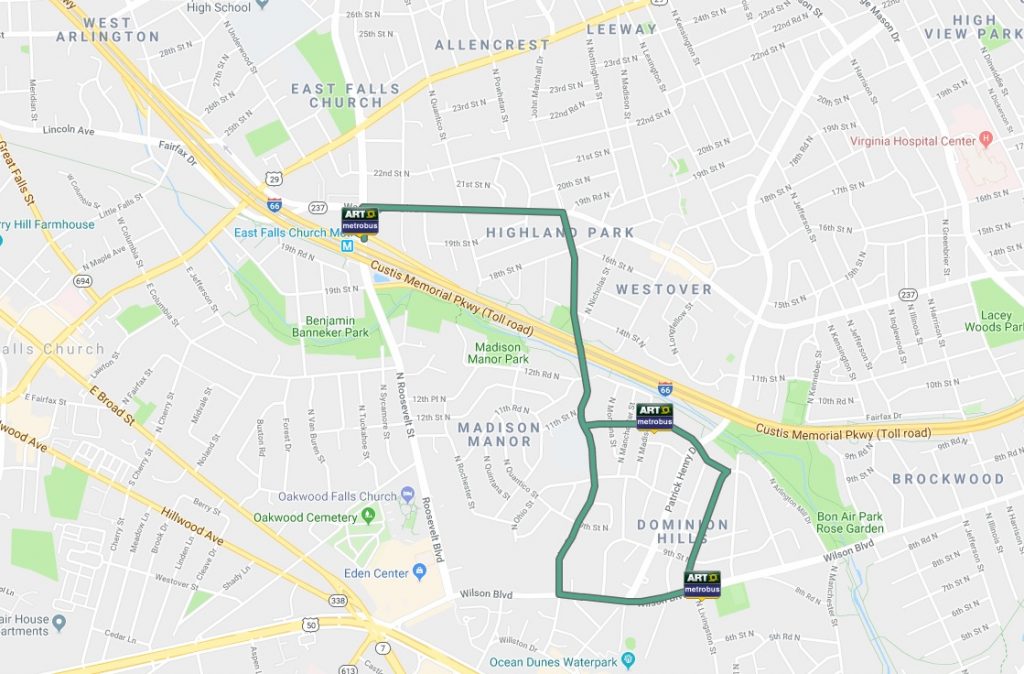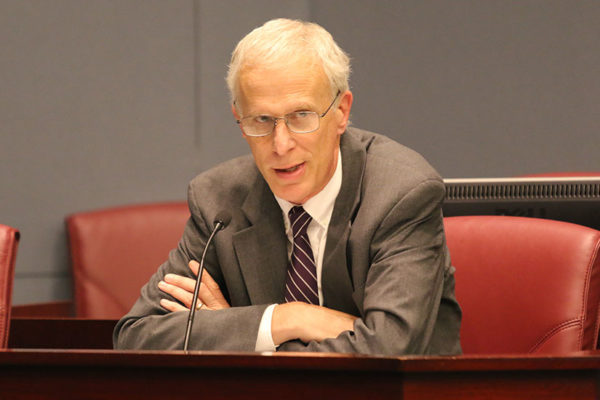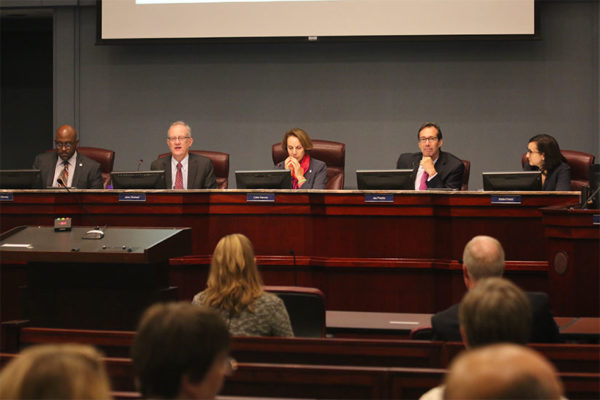
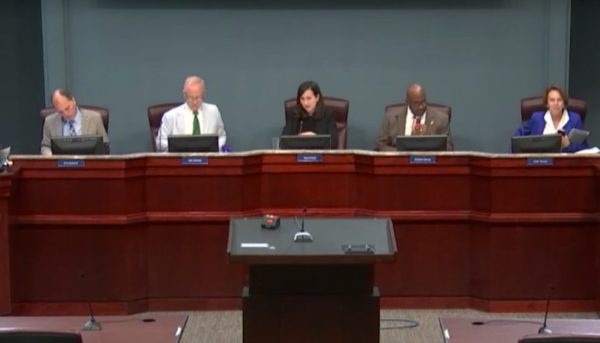
The Arlington County Board on Saturday unanimously passed a $1.276 billion balanced budget that includes a number of fee increases but no real estate tax rate hike.
The FY 2019 budget notably restores $70,000 in funding for Arlington Independent Media — County Manager Mark Schwartz proposed cutting about $90,000 in county funds for the community TV and radio broadcaster — after AIM collected more than 1,300 online petition signatures against the cut. The Board also boosted first responder pay, particularly starting pay which police and firefighter associations say is low and hurting recruitment, by $1.6 million above the manager’s recommendation, which already included a pay boost.
Funding the increased spending is the reallocation of $2.5 million from proposed renovations to the county government headquarters in Courthouse and the freezing of 16 vacant public safety positions.
Per the manager’s recommendations, the budget also increases parking meter rates and extends metered hours until 8 p.m., while increasing utility taxes, household waste fees and various departmental fees.
“The Board largely accepted the $8.4 million in spending reductions, $6.6 million in fee and tax increases and $5.5 million in funding realignments recommended by the County Manager in his proposed budget,” notes a county press release, below. County Board Chair Katie Cristol called the adopted budget “sustainably progressive.”
County funding for Arlington Public Schools will top the $500 million mark, as the school system continues to face pressures from enrollment growth and the opening of new schools. Metro, meanwhile, will receive a 3 percent increase in funding, receiving $73.1 million from the county’s coffers and state transit aid earmarked for Arlington.
In addition to AIM and first responders, the Board nixed the following cuts proposed by Schwartz, according to the markup record:
- $620,000 for the Affordable Housing Investment Fund
- $365,000 for Lee Highway planning and $25,000 for the Lee Highway Alliance
- $40,000 for the Legal Aid Justice Center, which serves immigrants
- $200,000 for a body scanner at the county jail
- $50,000 for the Arlington County Fair
- $20,000 for community shredding events
- $40,000 for the Arlington Neighborhood College program
- $184,000 for a youth mental health therapist
Among the proposed cuts not restored: the elimination of the printed Citizen newsletter, the elimination of two ART bus routes, the elimination of Arlington’s poet laureate and a $555,000 cut to the Arlington Initiative to Rethink Energy residential rebate program.
The latter drew some pushback from Board members.
“The cuts that we’re doing this year to AIRE — nobody’s going to die, there’s nothing fundamentally that any of us are going to lose sleep over or should be ashamed of,” said Erik Gutshall. “But while people don’t die, our planet is dying, its ability to sustain our life at least.”
“In future budgets, while we’re going to continue to make tough choices, we’re not going to let our commitment to the environment fall behind,” he added.
Despite the disagreements, the Board was unanimous in its vote on the budget, which Board members praised for prioritizing key areas while avoiding a tax rate increase. (The tax burden on the average homeowner will still increase by $296.)
“Despite the reductions, there are investments our community can be proud of in this budget,” Cristol said in a statement. “We prioritized funding our public schools, especially teachers, and investing in our workforce, especially public safety personnel. We preserved our social safety net and sustained funding for affordable housing and core services.”
“I see this budget really as a transition from the way we’ve been doing things to the way we’ll need to do things going forward,” said Libby Garvey. “This community has pretty much gotten used to having as much money as we need to do what we want to do. This year it’s starting to change. It’s likely to be even harder in the future with the stresses we have moving forward. I think it’s a good transition to what we’ll be doing moving forward.”
“What I think we’ve done is really weatherize our fiscal house for the inclement weather ahead,” echoed John Vihstadt. “It’s only going to get tougher as we move forward, but we took some important steps here that, while not greeted uniformly favorably, were necessary to be done.”
Arlington Independent Media and public safety associations, meanwhile, expressed gratitude for the additional funding.
Arlington County’s press release about the budget, after the jump.
(more…)



